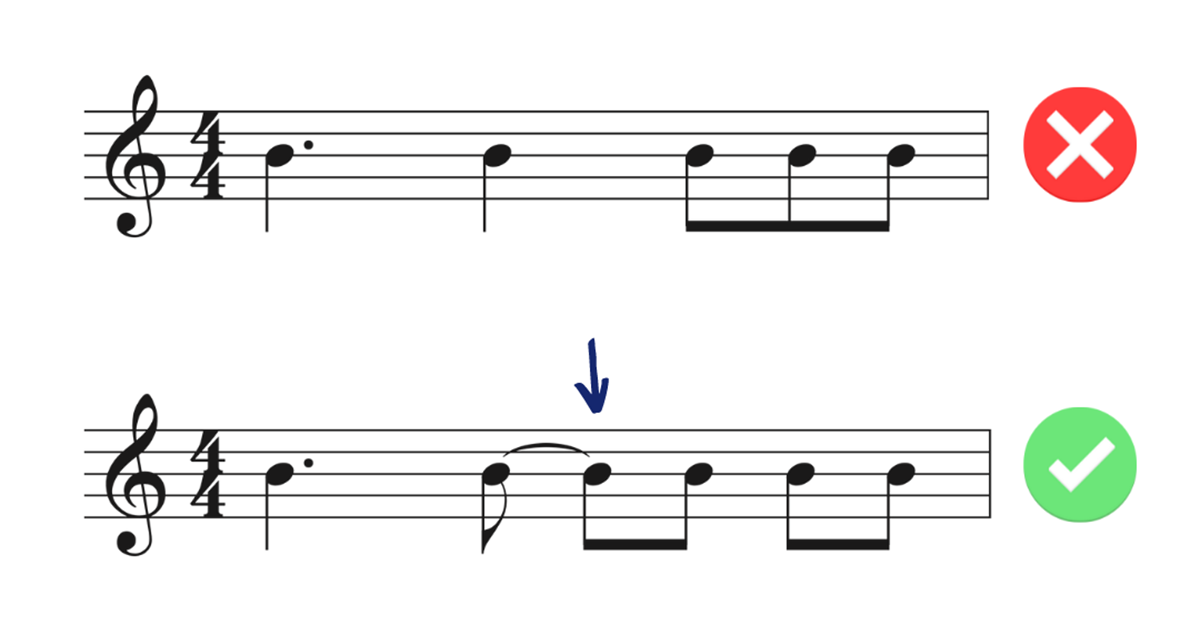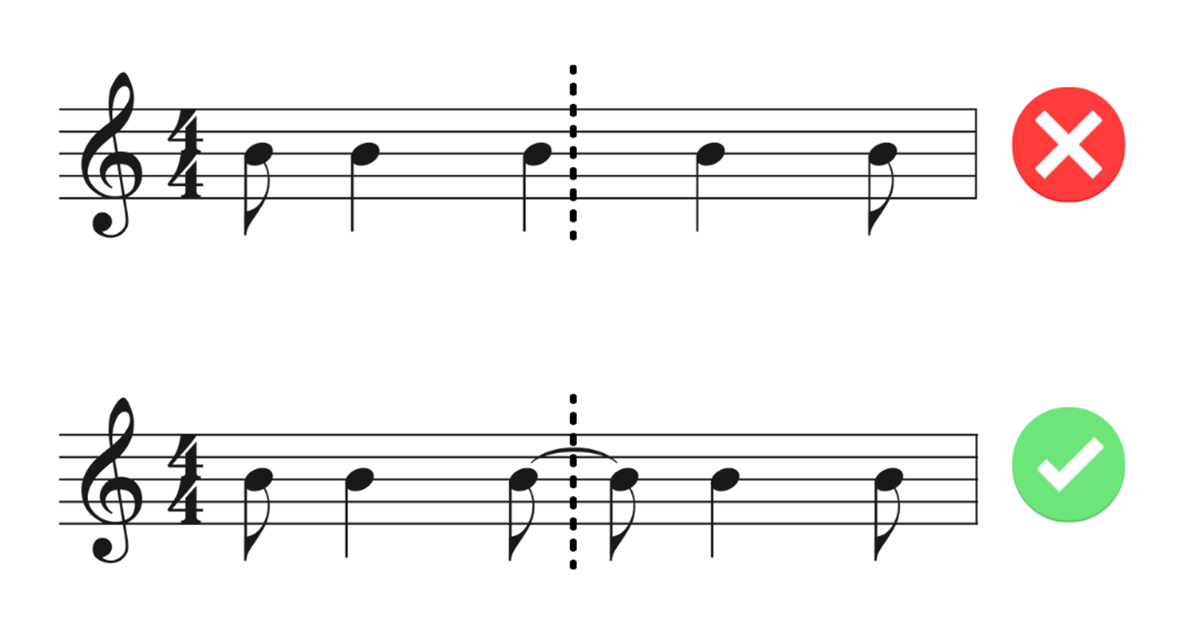Notating Syncopated Rhythms
Have you ever asked yourself, "Am I notating this rhythm properly?" We've all seen it: a rhythm that just doesn't look right. Sure, it might account for all the beats, but something is ... off.
Notating syncopated rhythms correctly is an important part of being a good arranger. It helps give your chart a more professional look, makes the music easier to read, and saves valuable rehearsal time.
Here are three tips to help you avoid the most common mistakes when notating syncopated rhythms in your arrangements:
1. Preserve the perception of the meter
Notating rhythm should never obscure the meter, especially when notating syncopation. Notice that beat 3 is not visible in the top example, whereas beat 3 is very clear in the bottom version.
Make sure your notation makes the meter clear.
2. Make beats as clear as possible
In the top example, only beats 1 and 4 are visible to the player.
The correct example makes every beat visible and is much easier to read.
3. Use the "invisible barline" test
Imagine an "invisible barline" that splits a measure into equal parts. This helps determine where to add tied notes for extra clarity.
The top example is technically okay, but again, beat 3 is not visible. Tying two 8th notes across the "invisible barline" helps clarify
beat 3.



